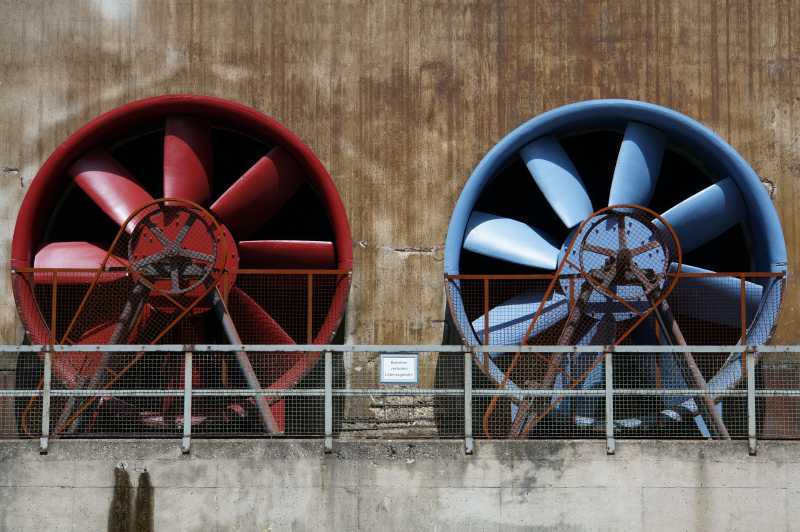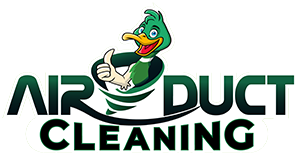Understanding the connection between indoor air quality and health is crucial for maintaining a healthy living and working environment. At Air Duct Cleaning, we specialize in enhancing the quality of your indoor air by providing top-notch air duct cleaning services. Our aim is to help you breathe easier by reducing potential allergens, pollutants, and contaminants that may be lurking in your air ducts. Poor indoor air quality can lead to a variety of health issues, including allergies, respiratory problems, and even chronic diseases. By investing in professional air duct cleaning, you’re not only improving the air you breathe but also promoting better health and wellness. Discover the importance of clean air and how it directly impacts your health in our comprehensive guide.
Understanding the Importance of Indoor Air Quality

Indoor air quality (IAQ) is a significant factor that contributes to the overall health and well-being of individuals. Poor IAQ can lead to a range of health issues, including allergies, respiratory problems, and even serious conditions like heart disease and cancer. The World Health Organization reports that 4.3 million people a year die from exposure to household air pollution. This highlights the crucial role of maintaining good IAQ.
One of the primary ways to improve IAQ is through regular air duct cleaning. Air ducts can harbor dust, allergens, and other pollutants that can negatively impact air quality. By ensuring these ducts are clean, you can significantly improve the IAQ in your home or office.
- How air duct cleaning works is a comprehensive guide that explains the process and benefits of air duct cleaning.
- For those wondering how often should air ducts be cleaned, this resource provides valuable insights.
- Understanding what is air duct cleaning can help individuals make informed decisions about maintaining their indoor air quality.
Moreover, it’s essential to choose a reputable air duct cleaning company. The best air duct cleaning company will have the necessary expertise and equipment to effectively clean your air ducts and improve your IAQ.
In conclusion, understanding the importance of IAQ and taking steps to improve it can significantly enhance your health and well-being. Regular air duct cleaning is a key component of maintaining good IAQ.
The Impact of Poor Indoor Air Quality on Health

Poor indoor air quality can have significant effects on health, ranging from minor irritations to severe conditions. Exposure to pollutants in the indoor environment can lead to a variety of health issues such as allergies, respiratory problems, and even heart disease. Dust, mold, pet dander, and chemical pollutants are common culprits that degrade indoor air quality. Regular maintenance and cleaning of air ducts can help improve indoor air quality. Learn more about the process on our how air duct cleaning works page.
The frequency of air duct cleaning can also influence the quality of indoor air. While there is no one-size-fits-all answer, experts suggest that air ducts should be cleaned every three to five years. However, this can vary depending on factors such as the presence of pets, occupants with allergies or asthma, and recent renovations. For more information, visit our how often should air ducts be cleaned page.
Moreover, the effectiveness of air duct cleaning in improving indoor air quality is a subject of much debate. While some argue that it is a waste of money, others assert that it can significantly improve indoor air quality and, consequently, health. To understand more about this, check out our does air duct cleaning really work page. In conclusion, maintaining good indoor air quality is crucial for health, and regular air duct cleaning can play a vital role in achieving this.
Common Indoor Air Pollutants and Their Effects

Indoor air quality significantly impacts our health, and it’s crucial to understand the common pollutants that degrade it. One of the most prevalent indoor air pollutants is dust, which can contain harmful substances like dust mites, mold spores, and pet dander. These particles can trigger allergies and asthma, leading to respiratory issues. Another common pollutant is volatile organic compounds (VOCs), found in many household products. Exposure to VOCs can cause headaches, dizziness, and long-term health effects like liver damage.
Tobacco smoke is another major indoor pollutant, containing over 4,000 chemicals, many of which are carcinogenic. Secondhand smoke can lead to various health problems, including lung cancer and heart disease. Lastly, radon, a naturally occurring radioactive gas, can accumulate in homes and cause lung cancer.
To ensure good indoor air quality, regular air duct cleaning is essential. It helps remove accumulated dust, mold, and other pollutants, improving the overall air quality. If you’re unsure whether your air ducts need cleaning, here are some indicators to observe.
Moreover, understanding what air duct cleaning involves can help you make informed decisions about maintaining your home’s air quality. Remember, clean air is not just about comfort; it’s a matter of health and well-being.
How Indoor Air Quality Affects Respiratory Health
Indoor air quality is a significant factor in determining our respiratory health. Pollutants, allergens, and other harmful substances often lurk in the air we breathe indoors, leading to a range of respiratory issues. Regular air duct cleaning can significantly improve indoor air quality by removing these harmful substances.
Dust, mold, pet dander, and other allergens can accumulate in air ducts over time, leading to poor indoor air quality. When these pollutants are circulated in the air, they can trigger allergies, asthma, and other respiratory conditions. Regular air duct cleaning can help reduce the concentration of these allergens in the air, thereby improving respiratory health.
Moreover, poor indoor air quality can also lead to Sick Building Syndrome (SBS), a condition characterized by a range of nonspecific symptoms that occupants of a building experience. These symptoms, including headaches, dizziness, and respiratory problems, often disappear when the individuals leave the building. Regular air duct cleaning can help prevent SBS by improving indoor air quality.
In conclusion, maintaining good indoor air quality is crucial for respiratory health. Regular air duct cleaning can help achieve this by removing harmful substances from the air. Therefore, it is essential to ensure that your air ducts are cleaned regularly to maintain good indoor air quality and promote respiratory health.
The Connection Between Indoor Air Quality and Allergies
Indoor air quality plays a significant role in our overall health, particularly for those suffering from allergies. Poor air quality can trigger allergic reactions, exacerbate existing conditions, and even lead to the development of new allergies. Allergens such as dust mites, pet dander, mold spores, and pollen can accumulate in our homes, significantly impacting the air we breathe.
One of the most effective ways to improve indoor air quality and reduce allergens is through regular air duct cleaning. Over time, air ducts can become a breeding ground for allergens, circulating them throughout the home every time the heating or cooling system is in use. Regular cleaning can help to reduce this allergen buildup, providing relief for allergy sufferers.
In addition to regular cleaning, it’s also important to consider the quality of air duct cleaning services. Not all services are created equal, and choosing a reputable company can make a significant difference in the effectiveness of the cleaning.
Finally, it’s important to understand the signs that your air ducts need cleaning. These can include increased dust in the home, worsening allergies, and visible dust or mold in the air ducts. By understanding the connection between indoor air quality and allergies, you can take proactive steps to improve your health and wellbeing.
Improving Indoor Air Quality for Better Health
Indoor air quality significantly impacts our health and wellbeing. Many people are unaware of the potential health risks that poor indoor air quality can pose. These risks can range from minor irritations such as allergies and asthma to more severe health issues like respiratory diseases. One effective way to enhance indoor air quality is through regular air duct cleaning.
Air ducts can accumulate dust, allergens, and other pollutants over time, which can then be circulated throughout your home, leading to poor indoor air quality. Regular cleaning of these ducts can significantly reduce the amount of these harmful particles in your home’s air.
Determining when your air ducts need cleaning can be challenging. However, there are several indicators to observe that can help you make an informed decision. These include visible dust or mold in the ducts, a noticeable increase in allergy symptoms among household members, or a sudden increase in your energy bills.
The effectiveness of air duct cleaning in improving indoor air quality is well-documented. It not only helps in reducing the risk of health issues but also enhances the efficiency of your HVAC system, leading to energy savings.
In conclusion, improving indoor air quality is crucial for better health. Regular air duct cleaning is an effective measure to achieve this goal. It’s a small investment that can lead to significant health benefits for you and your family.
The Role of Ventilation in Maintaining Indoor Air Quality
Ventilation plays a crucial role in maintaining indoor air quality, which is directly linked to our health. Proper ventilation helps to remove pollutants, allergens, and toxins from the indoor environment, ensuring the air we breathe is clean and safe. It works by allowing fresh outdoor air to replace stale indoor air, thus diluting and removing airborne contaminants.
The importance of ventilation can be understood by considering the potential health risks associated with poor indoor air quality. These can range from minor irritations like allergies and asthma to more serious conditions such as respiratory diseases and even lung cancer. Therefore, it’s essential to ensure that your home or workplace is adequately ventilated.
One effective way to improve ventilation and thereby enhance indoor air quality is through regular air duct cleaning. Over time, air ducts can accumulate dust, pollen, mold spores, and other pollutants, which can then be circulated throughout the building. Regular cleaning of these ducts can significantly improve the quality of indoor air.
However, it’s important to note that not all buildings require the same frequency of air duct cleaning. Factors such as the presence of pets, smokers, or individuals with allergies or asthma can all influence how often this service should be performed. To determine if your air ducts need cleaning, you can refer to this guide.
In conclusion, proper ventilation is a key factor in maintaining good indoor air quality and promoting health. Regular air duct cleaning is one effective method to ensure this, contributing to a safer and healthier indoor environment.
In conclusion, the link between indoor air quality and health is undeniable. Poor indoor air quality can lead to a myriad of health issues, from minor irritations like allergies and asthma to serious conditions like heart disease and cancer. It’s crucial to pay attention to the air quality in our homes, workplaces, and schools, as it directly impacts our well-being. Simple measures such as regular cleaning, proper ventilation, use of air purifiers, and keeping indoor plants can significantly improve indoor air quality. By prioritizing clean air, we are not just enhancing our immediate comfort, but also investing in our long-term health and wellness.





